We’re up to somewhere between a dozen and 15 hummingbirds at the feeders now. I’m not sure whether our resident hummers are still here, but the rest are certainly in migration from up north and are gathering energy for their trip farther south and soon thereafter across the Gulf of Mexico. The birds are starting to share the feeders more and more, mostly because there are so many hummers now that individuals don’t really have a chance to defend their territory.

I know I have taken (and shared) lots of hummingbird pictures in the past, but it’s hard not to — the birds beckon me with their spirited antics, and I enjoy sitting out there absorbing their happy, frenzied presence. But if I find myself outside without my camera, I long for it, so mostly I just bring it along and try to get a great shot. Then, of course, I feel obligated to share.

Most of the time I use my zoom lens with hummingbirds, because it enables me to get shots like this lucky tongue image.
I also can capture pollen on a hummingbird’s bill. If you ever wondered whether a hummingbird is an effective pollinator, there’s proof.

With the zoom, I can also get close enough to get feather details on the little birds and yet not disturb them.

The downside to the zoom is that it gets tougher to capture the interaction between birds (when they really get their speed going). But it’s doable.
Today, however, brought a most enjoyable experience, all thanks to an annoying tilt of the shepherd’s hook holding two of our feeders. I couldn’t resist trying to fix it during a momentary lull in hummingbird activity. I had scarcely put my hand on the shepherd’s hook when suddenly I was surrounded by fast-moving, buzzing hummingbirds. There I was, inches from two feeders, and birds were swarming me. At first they circled me, periodically hovering in front of my face to see whether I was friend or foe, and since I didn’t move a muscle (other than to softly talk to them), they decided I was friend, or at least safe enough. Just inches from my face, they sat, drank, hovered, checked me out, drank some more, and even had their usual feisty spats. The breeze from their wings felt great upon my skin, and it was impressive how much air movement there was.

During another lull of activity, I quickly went inside to grab a regular lens, hoping to get a picture (the zoom wouldn’t have worked that close to my subjects). But I soon learned that while the hummingbirds did not mind me, they were less fond of my camera. Perhaps the lens looked like a large gaping mouth. Whichever feeder my face was near, the birds sat and drank without concern. Whichever feeder my camera faced, the birds were hesitant to linger at the feeder, and only a couple did fly-by drinking. Needless to say, it was a challenge to actually take a picture with a hummingbird in it, but I managed a couple. The above is my favorite.
Of course, once I realized how unperturbed the hummingbirds were by my presence, I encouraged my family to experience the thrill of being so close to the zooming birds. I can report that the hummingbirds did not mind Nolan’s small point-and-shoot camera. I think the “big lens = big mouth” theory might be close to the truth.

If you have visiting hummingbirds, especially in large numbers, I highly recommend you give it a try. Perhaps you’ll get to experience those lovely hummingbird breezes on your skin, too.

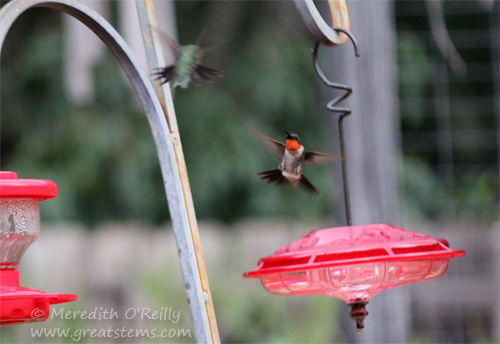 The sounds of the feisty little birds draw me outside. The hummingbirds are usually so focused on defense and territoriality and getting nectar that they hardly noticed the humans taking pictures, dogs running amok, and thunder or other noises in the background. Such was this evening’s setting.
The sounds of the feisty little birds draw me outside. The hummingbirds are usually so focused on defense and territoriality and getting nectar that they hardly noticed the humans taking pictures, dogs running amok, and thunder or other noises in the background. Such was this evening’s setting.
 Occasionally hummingbirds will settle down and share a feeder. In fact, as more hummers appear during migration, they will share more and more, as the need to build up energy stores for long-distance travel becomes more pressing.
Occasionally hummingbirds will settle down and share a feeder. In fact, as more hummers appear during migration, they will share more and more, as the need to build up energy stores for long-distance travel becomes more pressing. During migration season, the vast majority of the hummingbirds I see in my Austin garden are Ruby-throats. The males have the iridescent gorget, which seems truly vibrant when the light is just right (but otherwise it looks dark).
During migration season, the vast majority of the hummingbirds I see in my Austin garden are Ruby-throats. The males have the iridescent gorget, which seems truly vibrant when the light is just right (but otherwise it looks dark).



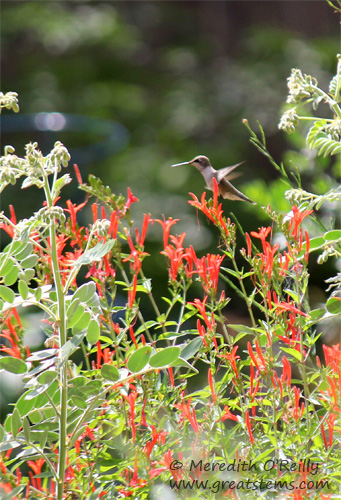
 I have Flame Acanthus in two colors — red and orange. Other native Texas plants I grow for hummingbirds include Turk’s Cap, Standing Cypress, Autumn Sage, Tropical Sage, Crossvine, Coral Honeysuckle, Red Yucca, Texas Lantana, Purple Coneflower, Yellow Bells/Esperanza, Texas Betony, Lindheimer’s Morning Glory, and more.
I have Flame Acanthus in two colors — red and orange. Other native Texas plants I grow for hummingbirds include Turk’s Cap, Standing Cypress, Autumn Sage, Tropical Sage, Crossvine, Coral Honeysuckle, Red Yucca, Texas Lantana, Purple Coneflower, Yellow Bells/Esperanza, Texas Betony, Lindheimer’s Morning Glory, and more. But I always have feeders out, even in the winter. For a variety of reasons a hummingbird might not be able to migrate as far as it is expected to, and having a feeder available when no blooms are present in winter just might save its life.
But I always have feeders out, even in the winter. For a variety of reasons a hummingbird might not be able to migrate as far as it is expected to, and having a feeder available when no blooms are present in winter just might save its life. When selecting a hummingbird feeder, I look for three primary things — does it only show red (no white or yellow parts), is it made of plastic or glass, and is it easy to keep clean? I avoid feeders with white or yellow flowers because bees are attracted to these colors, and I avoid metal feeders because they can so easily rust, and the heavy iron can kill hummingbirds.
When selecting a hummingbird feeder, I look for three primary things — does it only show red (no white or yellow parts), is it made of plastic or glass, and is it easy to keep clean? I avoid feeders with white or yellow flowers because bees are attracted to these colors, and I avoid metal feeders because they can so easily rust, and the heavy iron can kill hummingbirds. How else can you help our little hummer friends? Keep your garden free of pesticides, for hummingbirds need insects and spiders for protein. They’ll eat aphids, fruit flies, midges, and even mosquitoes! They also love shallow running water and mists.
How else can you help our little hummer friends? Keep your garden free of pesticides, for hummingbirds need insects and spiders for protein. They’ll eat aphids, fruit flies, midges, and even mosquitoes! They also love shallow running water and mists. Of course, don’t be fooled if some other “hummingbirds” come to visit — this little Snowberry Clearwing Moth has well earned its nickname of Hummingbird Moth. It flies and hovers and zips about to feast on the nectar of daytime-blooming flowers. You might do a double-take, for it can look like a hummingbird if you catch just a glimpse.
Of course, don’t be fooled if some other “hummingbirds” come to visit — this little Snowberry Clearwing Moth has well earned its nickname of Hummingbird Moth. It flies and hovers and zips about to feast on the nectar of daytime-blooming flowers. You might do a double-take, for it can look like a hummingbird if you catch just a glimpse.

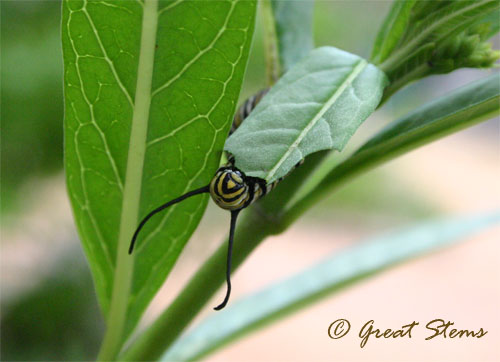














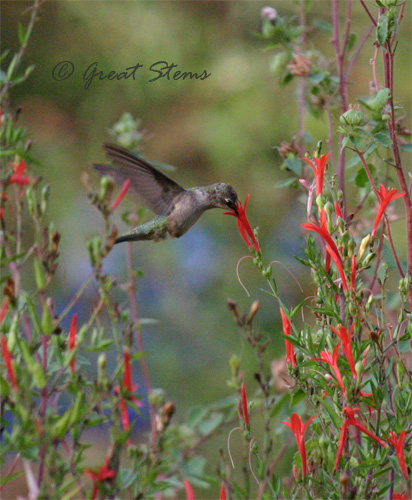























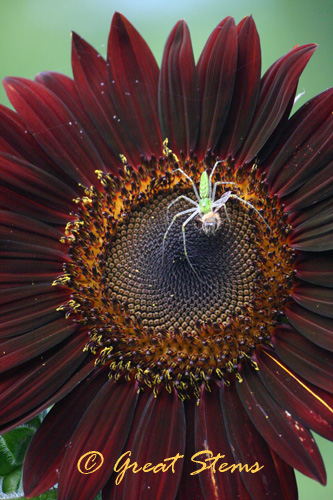

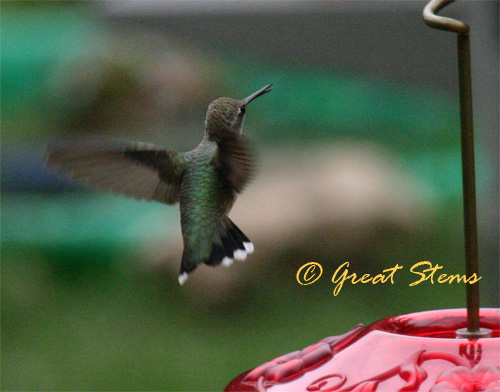




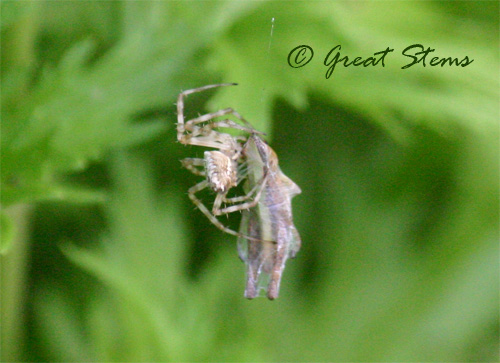


 Hummingbirds!
Hummingbirds!
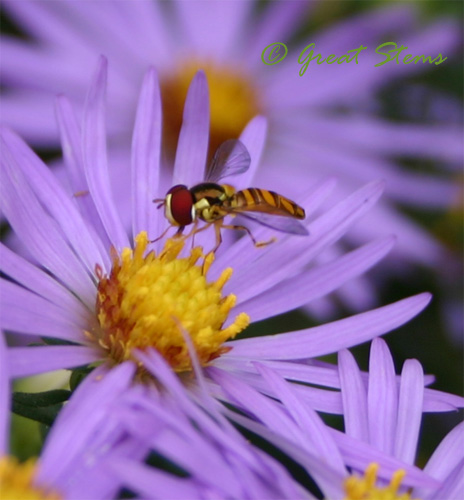





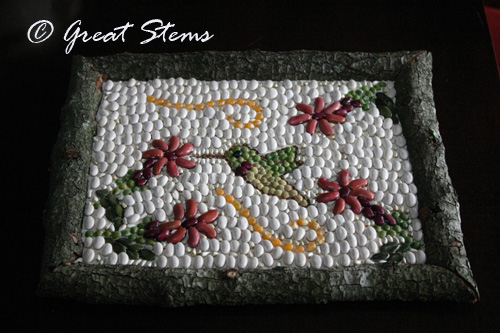

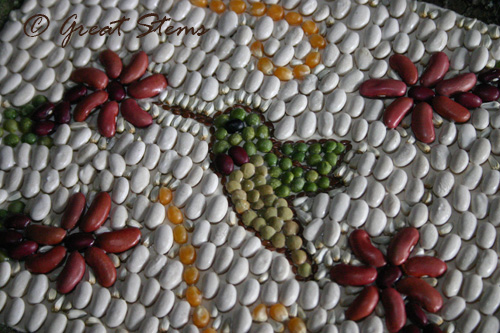 For other family and friends, we tried our hand at making seed ornaments, as often in the past we’ve enjoyed giving purchased seed gifts for others, to hang out for the birdies.
For other family and friends, we tried our hand at making seed ornaments, as often in the past we’ve enjoyed giving purchased seed gifts for others, to hang out for the birdies.
